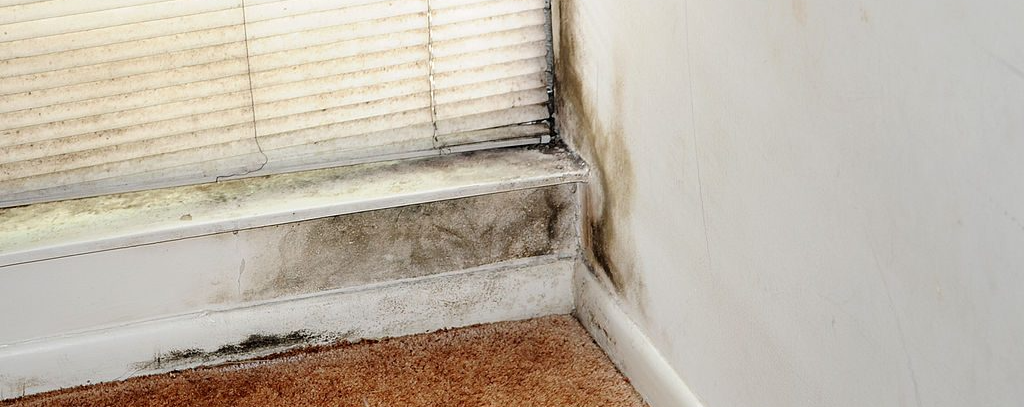Causes Of “Black Mold” Growth In Your Home (And How To Get Rid Of It)

Black Mold Removal Requires Professional Treatment
Black Mold Needs the Right Conditions to Thrive
For mold to grow, it needs the following conditions:
- Food Source: black mold needs an organic food supply to live and grow. In this case, mold eats organic substances in wood, wallpaper, flooring, and other building materials. Since the “food” supply isn’t something you can get rid of, it’s important to control for the other conditions once mold is removed to prevent regrowth.
- Moisture: black mold loves humidity, which is excess water in the air. For this reason, mold is often found in high moisture areas like bathrooms, basements, or attics with HVAC ducts.
- Warm, Dark Place: most mold spores will die in extreme cold (although some can live in your freezer!), so a warm, dark place is ideal for growth. Under house storage areas, outdoor showers, and anywhere where light is low and temperatures are warm is prone to mold growth.
If black mold has all of the conditions above, it can grow and thrive rather quickly. You may even see mold spread in a couple days.
Common Causes of Black Mold Growth
But where did this mold come from and why is it happening all of a sudden? This is the question many Myrtle Beach homeowners ask. You may have not seen any mold and now an explosion of it. Why? Here are the most common causes of black mold growth:
HVAC Duct Condensation: Myrtle Beach is a hot and humid place in the summer, and most have a central AC running all the time during the hottest part of the year. The HVAC ductwork carries cooled air around your house, but it is also responsible for removing moisture. Trapped condensation or leaky ducts may create the moist, dark spaces needed for black mold to grow. These problems are sometimes discovered by an HVAC professional who may be inspecting for the source of inefficient home cooling. Ductwork cleaning or repair should happen alongside mold removal.
Slow Plumbing Leaks: the plumbing behind the toilet, under sinks, or below bathtubs is often hidden from view. Slow leaks dampen and soften floorings or cabinetry and become warm, dark places for mold growth to occur. If you see black mold around plumbing, it’s a good idea to investigate for slow leaks and repair them immediately in addition to taking care of the black mold.
Damage to Roof, Foundation, or Other Home Structure: Myrtle Beach experiences hurricanes, tropical storms, and flash flooding (and with it plenty of power outages). As a result, homes may see storm surging water that damages first floors, roofs, or seeps into other structural cracks. These are all potential areas for mold growth. Given that there are few basements in Myrtle Beach, basement black mold growth isn’t the concern that it is in other parts of the country. Should you experience home damage during a storm, we recommend working with a mold and water damage specialist like MasterTech of Myrtle Beach alongside a trusted residential contractor and home builder.
Get Rid of Black Mold with MasterTech of Myrtle Beach
Summer is here and that means high humidity in Myrtle Beach. Excess moisture in the air can also cause mold to develop. Don’t underestimate mold spores. In the right conditions they can be difficult to kill and harmful to your health–even deadly! MasterTech Environmental of Myrtle Beach offers mold inspection, testing, and removal services for homes and businesses.
We provide the safest, most effective mold removal services throughout Myrtle Beach and surrounding areas in South Carolina and North Carolina. Need more information about our services in your South Carolina area? Contact MasterTech with our online form or call us today: 843-236-3399.



